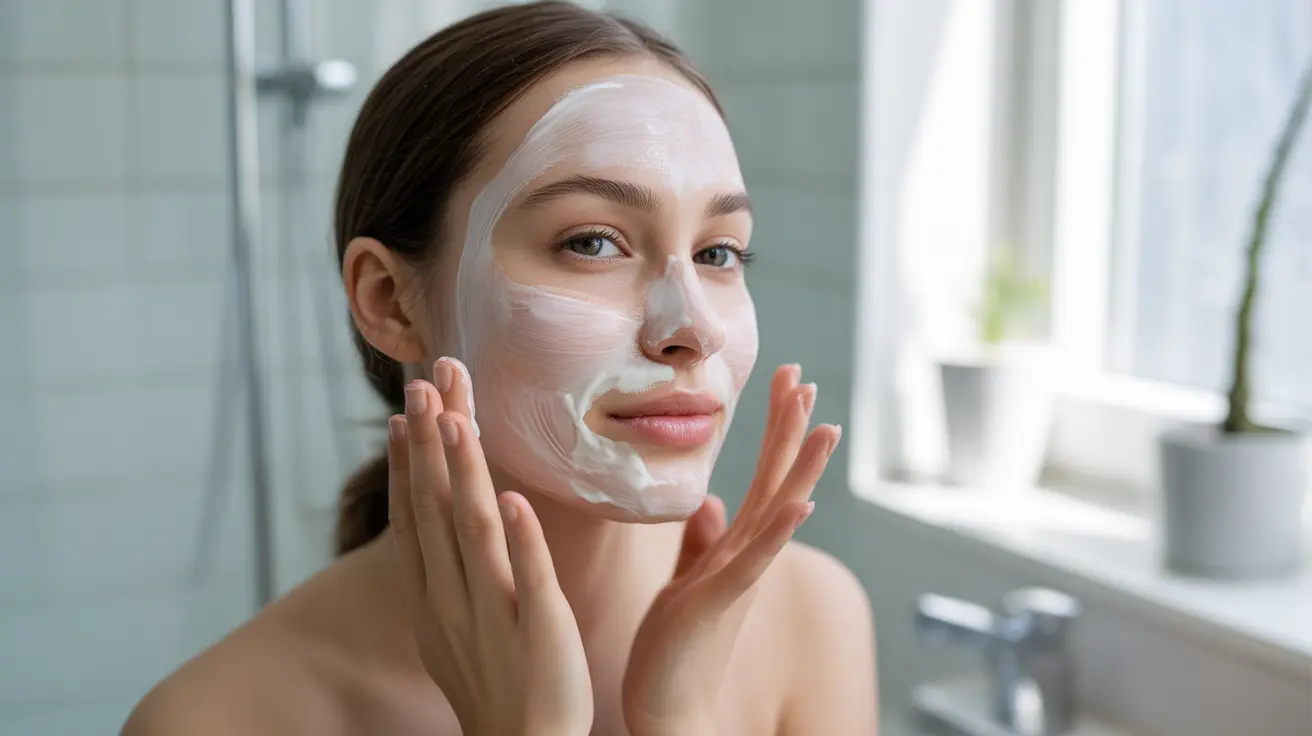Looking for a natural, affordable way to enhance your skincare routine? Curd, a dairy product rich in beneficial compounds, has been used for centuries in traditional beauty practices. This nutrient-rich ingredient offers multiple benefits for skin health, from moisturizing to helping combat common skin concerns.
Let's explore how incorporating curd into your skincare regimen can help improve your complexion and what science says about its effectiveness for various skin types and concerns.
The Science Behind Curd's Skin Benefits
Curd contains lactic acid, a natural alpha-hydroxy acid (AHA) that gently exfoliates dead skin cells while promoting cell turnover. It's also packed with probiotics, vitamins, and minerals that can support skin health and maintain its natural barrier function.
The zinc and calcium content in curd helps promote skin renewal, while its protein content supports collagen production, contributing to firmer, more resilient skin.
Key Skin Benefits of Curd Applications
Natural Moisturizing Properties
Curd's high moisture content and natural fats make it an excellent natural moisturizer. When applied topically, it helps hydrate the skin and lock in moisture, preventing dryness and flakiness.
Gentle Exfoliation
- The lactic acid in curd provides mild chemical exfoliation, helping to:
- Remove dead skin cells
- Unclog pores
- Improve skin texture
- Promote a brighter complexion
Acne-Fighting Properties
The antibacterial properties of curd, combined with its probiotic content, can help combat acne-causing bacteria. Its anti-inflammatory properties may also help reduce redness and inflammation associated with breakouts.
How to Use Curd in Your Skincare Routine
Basic Curd Face Mask
- For best results, follow these steps:
- Use plain, unflavored curd at room temperature
- Apply a thin layer to clean skin
- Leave on for 15-20 minutes
- Rinse with lukewarm water
- Apply 2-3 times per week for optimal results
Popular Curd-Based Face Mask Combinations
- Enhance curd's benefits by combining it with other natural ingredients:
- Curd + honey for extra moisturizing
- Curd + turmeric for brightening
- Curd + lemon juice for spot treatment
- Curd + besan (gram flour) for gentle scrubbing
Precautions and Best Practices
- Before incorporating curd into your skincare routine:
- Perform a patch test to check for sensitivity
- Use fresh, plain curd only
- Avoid if you have a dairy allergy
- Start with weekly applications before increasing frequency
- Store any unused mixture in the refrigerator for no more than 24 hours
Frequently Asked Questions
- What are the benefits of using curd as a face mask, and how often should I apply it?
Curd offers multiple benefits including moisturizing, gentle exfoliation, and antibacterial properties. Apply it 2-3 times per week for optimal results, adjusting frequency based on your skin's response.
- Can curd help treat acne, and if so, how does it work?
Yes, curd can help treat acne through its antibacterial properties and probiotic content. The lactic acid helps unclog pores, while its anti-inflammatory properties can reduce redness and swelling.
- How does curd help in brightening and evening out skin tone?
The lactic acid in curd acts as a natural exfoliant, removing dead skin cells and promoting cell turnover. This process helps reveal brighter, more even-toned skin underneath.
- Is curd safe for all skin types, and are there any potential side effects to watch out for?
While curd is generally safe for most skin types, those with dairy allergies should avoid it. Some may experience mild irritation or redness. Always perform a patch test first and discontinue use if irritation occurs.
- What are some popular recipes or combinations that include curd for a homemade face pack or mask?
Popular combinations include curd with honey for hydration, turmeric for brightening, lemon for spot treatment, and besan for gentle exfoliation. Mix ingredients fresh before each use for best results.




